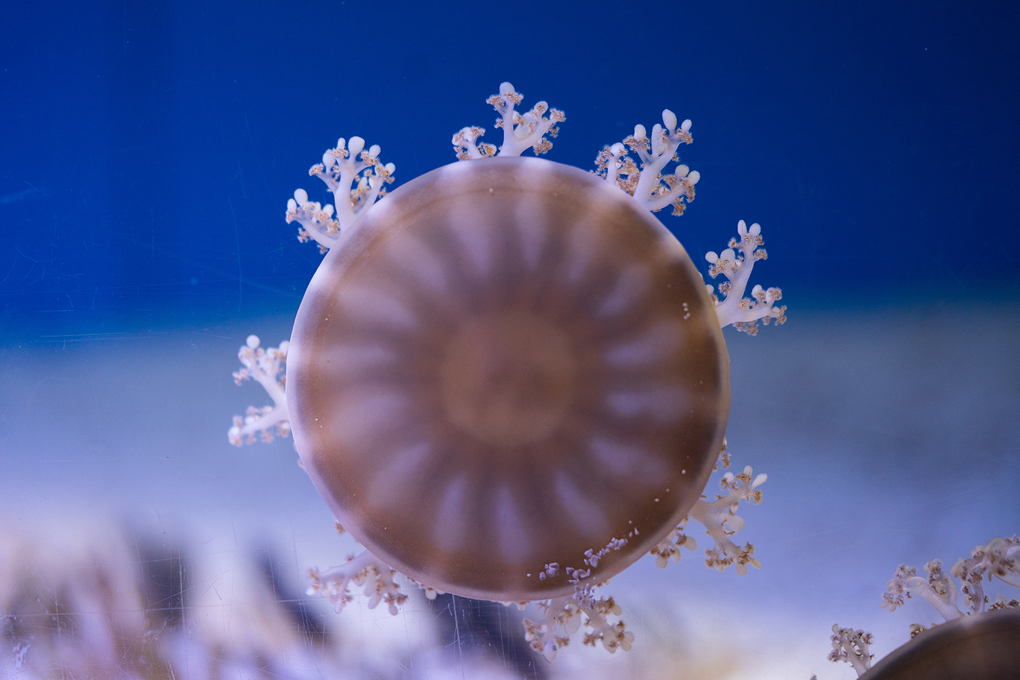Cassiopeia xamachana
Fast Facts
- Their body is 95% water.
- Upside-down jellies have a symbiotic relationship with algae that help give them their color and provide them with oxygen and glucose.
- Since they spend most of their time upside down, they easily can be mistaken as an anemone.
- Their flat bell acts like a suction cup to adhere to the sand.


Range
Tropical Atlantic Ocean, Gulf of Mexico, Caribbean, and southern Florida

Habitat
Shallow lagoons, coastal mangrove forests

Size
1 foot across, 6 inches high

Nutrition
Zooplankton
Characteristics
This brownish-green jelly is turned upside-down with stubby oral arms. Upside-down jellies have more than 40 mini mouth openings. Their bodies are 95% water, 3% salt, and 2% protein. They are usually seen lying on the bottom of their environment and are commonly mistaken for sea anemones. They have a sting, but it is not highly venomous or deadly, and they do not sting very often. Symbiotic algae living in the jelly’s body not only gives it food, but also oxygen, which allows the jelly to survive in oxygen-poor water.
Behavior
When very young, the upside-down jelly will use its bell like a suction cup and stick to the sand or substrate. They spend their time upside-down facing the sun, because they have a symbiotic relationship with algae living inside of their tissue. The algae photosynthesize, which produces most of the food for the jelly. The jelly also feeds on passing zooplankton. By pulsing their bell, they can force zooplankton into their many mouths.
Reproduction
Reproduction in sea jellies is quite unusual, using both sexual and asexual reproduction. There are male and female jellies who release their gametes into the water which form into larvae. The larvae usually settle down on the bottom and develop into polyps, which start to divide into more polyps. These polyps develop tentacles and individually swim away.

